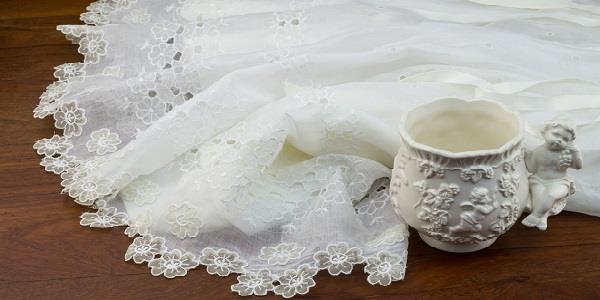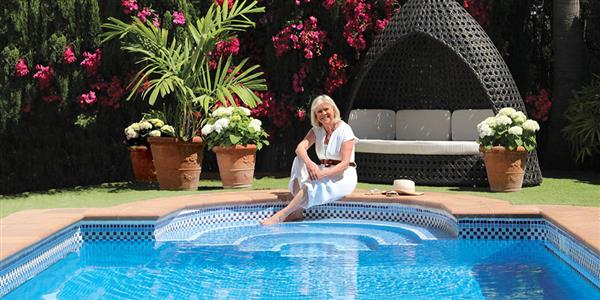
The safe arrival of a new baby seldom fails to gladden the heart. And congratulations and best wishes are surely due to the Duke and Duchess of Cambridge, William and Kate, on the birth of their baby boy. Whether republican or royalist, it seems only right to wish the Cambridge family – five-strong now – every future happiness.
The birth of a new baby gives us all hope for the future – and that is assuredly a sentiment shared by the good people of Honiton in Devon, just five miles north of Lower Knapp Farm. For what is certain is that when Prince Louis Arthur Charles is baptised, he will be wearing a christening gown made, at least in part, of the famous Honiton lace.
Actually, Honiton lace enjoys a long association with the Royal Family, ever since Queen Victoria was married in a Honiton lace dress and veil in 1840 and, a year later, commissioned a lace-and-satin christening gown for the first of her nine children.

Princes William and Harry were christened in the original gown, as was their father Prince Charles. That gown is now too fragile to be used, but it’s been replaced by one commissioned by Her Majesty the Queen in 2008. Made from Honiton lace and white satin (as was the original), the replica robe has been worn by Prince George, Princess Charlotte and other new members of the Royal Family. The latest arrival will be the eighth royal baby to wear it.
The impending ceremony will train a welcome spotlight on the small, delightful East Devon town. Though lace-making in and around Honiton was only ever a cottage industry – in the true sense of the word – it thrived for more than 400 years, but dwindled thanks to modernisation and mechanisation and by 1940 had pretty much died out.
But the industry has been revived of late. Thanks to a renewed interest in old-fashioned crafts (and craftsmanship), lace-making workshops are springing up around the town, notably at the Honiton Lace Museum but also elsewhere, as a new generation of locals and visitors is being introduced to the craft – or arguably art – of fine lace-making.
Certainly, the lace – both new and old – that comes out of Honiton is without parallel. It is beautifully crafted, and collectors’ pieces fetch extremely high prices.
A visit to Honiton is always worthwhile. As well as being the home of lace-making, the town is also famous for its pottery, and is in any event a lovely place to pass the time: situated in an Area of Outstanding Natural Beauty; easy on the eye; with numerous welcoming cafés, restaurants and pubs, in town or within easy walking distance.
And antiques! Honiton is stiff with antique shops – selling pottery and old lace, naturally, as well as all manner of other collectibles and curios.
It’s too soon to tell, really, whether lace-making in Honiton is enjoying a sustained revival – but it’s certainly due one, and the royal christening can only help.

